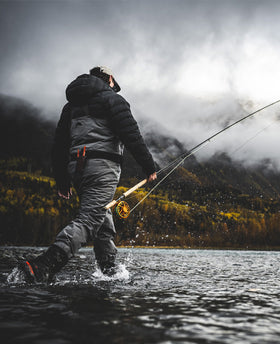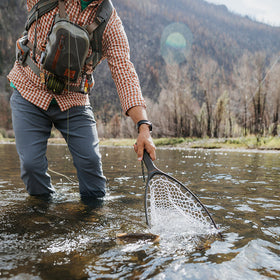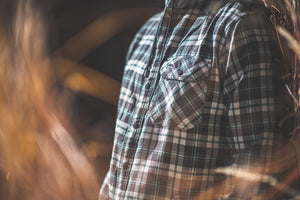
Famous Fly History 2: Adams
The Adams Dry Fly was first tied in Michigan in 1922 by a man named Leonard Halladay. Originally from New York, Leonard moved to Mayfield, Michigan with his family when he was a young boy. As he grew older, Leonard took up the past times of fly fishing and tying flies, and spent his days pursuing grayling and brook trout. As these fish began to dwindle due to habitat destruction from the logging industry, Michigan began to introduce the German brown trout into rivers and streams.

On a summer day in 1922 at the impoundment of Swainston Creek, otherwise known as the Mayfield Pond, Mr. Halladay gave his friend Mr. Adams his newest fly design; requesting that he try fishing it on the Boardman river later that evening. When Mr. Adams returned the next day, he proclaimed the fly a great success. Halladay suggested they name it after Mr. Adams since he was the first to catch a fish on the fly. The name stuck, and the Adams dry fly was officially born. The Adams would go on to become arguably the most popular fly in existence, and became a staple dry fly for anglers across the world.

The Adams Dry Fly is tied with a gray or brown body made of muskrat fur or other similar materials, along with grizzly hackle feathers for the wings and tail. The fly can be tied in various sizes to imitate different insects but is usually tied in the #16-#20 range. It can be fished in a variety of ways in many different types of water, making it a very versatile pattern. Over the years, the Adams has undergone some modifications and variations, such as the irresistible Adams, which uses elk hair for the wings instead of grizzly hackle; and the parachute adams, which adds a tuft of white calf tail fiber to the wings adding buoyancy and visibility to the fly. Check out a tying video of the original Adams here:
This fly is best fished at a dead drift, in the current, during an emergence of mayflies. There are a variety of ways to obtain the dead drift, but the one of the most deadly is the downstream presentation. The downstream presentation is particularly useful in situations where fish are incredibly selective or spooky. Standing upstream from your target, cast slightly downstream and land your fly softly above the feeding fish. Immediately after your fly lands toss slack into your line by bouncing your rod tip; allowing your fly to float drag-free towards the target. Advanced anglers can also apply a mend while feeding slack, and can get the fly to drift downstream, without drag, for quite a ways. Make sure to set the hook directly upwards, not at an angle.

Next time you’re on the river, examining your box of flies, take time to understand that each of them has a history. Part of the beauty of our sport is the timeless passing down of knowledge and tradition, so remember to appreciate our fly fishing ancestors. Oh, and next time you are thinking about what fly to use during a mayfly hatch, say a quiet thank you to our boy Leonard and tie on an Adams. You won’t be disappointed.






Leave a comment